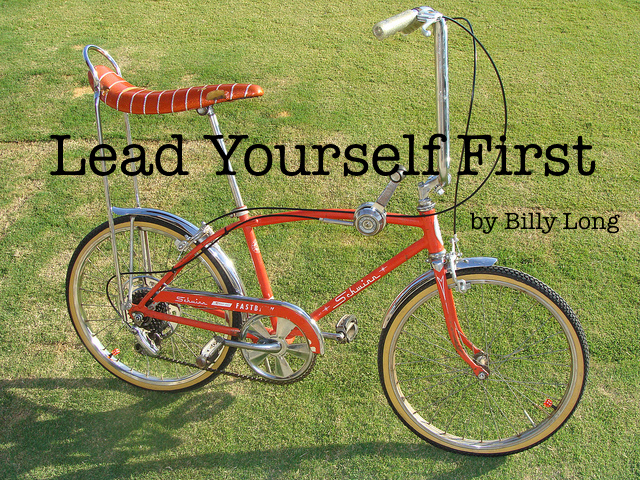I have found myself doing some internal reflection lately. I have figured out, that for me to be effective as a leader, I need to be able to lead myself. And, no I don’t mean this as another do as I do kind of article.
The truth is I have always wanted to help others, but I haven’t always made them a priority. I have always wanted to be a hard conscientious worker, but sometimes I let the wrong things take up the majority of my time. I have spent the last few weeks reflecting on some observations. I have done some research and I want to share some of my findings.
What I’ve learned is, that unless you’re able to lead yourself, you won’t be effective in leading others. You can certainly inspire them or you can entertain them, but to take them places they can’t go by themselves, they have to want to follow you. And like it or not, your example speaks louder than your words. Your example impacts your followers desire to follow you and it impacts the model of work that they adopt. My hard work begets hard work in those following me.
I like to compare leading yourself to riding a bicycle. To go anywhere, you have to remember four principles:
Kickstand principle: You don’t go anywhere on a bicycle with your kickstand down. You have to kick it up and get on the bike. This is the only way to defeat the law of inertia. Leaders have to have purpose to get going. The have to put themselves in motion. So many people are waiting for God to tell them what to do. God is usually waiting for us to look at what he already told us to do and start doing something, anything.
Handlebar principle: The next thing you do before you even begin to pedal is to grab the handlebars and begin pointing in a given direction. You may only be able to see to the end of the street, but you immediately begin to steer that way. To lead yourself, you have to at least figure out what your day looks like and begin there. Or better yet, begin by visualizing a month or a year into the future and begin filling out your calendar.
Pedal principle: Putting your feet on the pedals and beginning to push is work. No one leads themselves or others without doing work. Sometimes pedaling can be exhausting. Going up a steep hill can make you want to get off the bike and walk. But pedaling is what gives you the momentum you need to steer in the direction that you are going. Stop doing the work and you stop leading. Many young people struggle with this principle. They are OK getting started, but when the steep hills and long stretches come, they tire and want to stop.
Balance Principle: When you first start riding a bike, balance is something you learn. Once you succeed at balancing and make it second nature, you rarely have to think about it anymore. That’s how a person is who looks at their time, establishes priorities, and then lives according to those priorities.
If your friends and family are important to you, you spend time with them. If a project is important to you, you compile a list of action items and devote time to completing them. To stay on a bike, you continually adjust and re-balance along the twists and turns of your route. Similarly, if a project is going to require extended hard work, you evaluate how to balance the time available to you. If it will require financial sacrifice, you balance that against your other priorities.
One of the reasons so many corporations are experiencing a crisis of leadership these days is that their leaders never really learned how it to lead themselves. Apply these four principles to leading yourself and you take an important first step in positioning yourself to lead others.
Photo credit: anarchosyn / Foter / CC BY-SA




Please note: I reserve the right to delete comments that are offensive or off-topic.